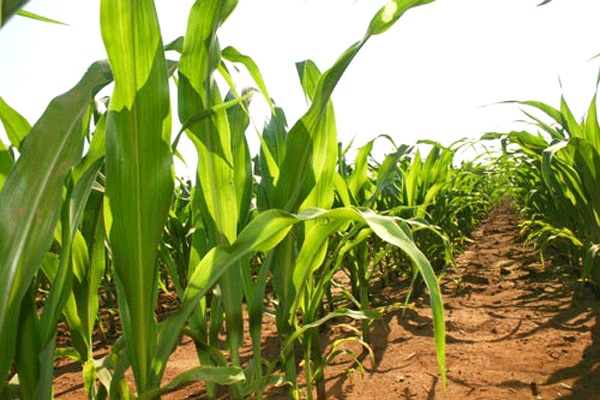
• Pale leaves cannot photosynthesize as well as they should. Pale color is mostly a symptom of the poorly functioning root system that results from low soil oxygen.• Several reports of "floppy" corn have also come in during the past two weeks from areas where soils had been dry for some time and plants were starting to grow rapidly.
June 17, 2011

While the corn crop is planted and emerged in most Illinois fields, damage from both standing water and dry soils are causing stress to the crop in places across the state, said University of Illinois Extension agronomist Emerson Nafziger.
"Saturated soils cause both root damage and loss of N, meaning that plants are unable to take up enough N to keep healthy color," he said. "While pale leaves cannot photosynthesize as well as they should, pale color is mostly a symptom of the poorly functioning root system that results from low soil oxygen.
“In such cases, while supplemental N may provide some benefit, it will not do so until and unless soils dry enough to allow roots access to oxygen again."
Nafziger said several reports of "floppy" corn have also come in during the past two weeks from areas where soils had been dry for some time and plants were starting to grow rapidly.
"This is almost always a case where the nodal root system is trying, and failing, to grow out into the soil," he said. "This happens when surface soils are too dry to support root growth. In some cases a physical barrier, such as sidewall drying and hardening following no-till, also contributes."
Plants with this problem have outgrown the capacity of the seminal root system to support growth, and so they may fall over, due both to lack of physical support and to lack of water, he said.
May turn purple
They may also turn purple as sugars accumulate. These sugars accumulate because they aren't being used to support root growth or for top growth as water uptake declines. He said the only cure for this is to have the soil near the base of the stem get wet, thereby allowing roots to penetrate and grow.
"There are always concerns about how poor growing conditions or stress during early vegetative growth — V5 to V8 or so — might result in permanent damage to yield potential," Nafziger said.
"This concern arises from the knowledge that the ear starts to develop during this period, and the assumption that full potential can only be reached when conditions are ideal. While we would rather have the crop experience no stress during the entire season, there is little evidence to suggest that yields are often curtailed by what happens during vegetative growth."
He said it's difficult to do an experiment in "controlled stress" where researchers can actually test this. But observations, along with what experiments have been run, suggest that as long as the height and leaf area of the crop aren't compromised, crops that undergo some stress during early to mid-vegetative growth can yield very well.
"In part, the resistance of corn to stress during mid-vegetative growth or earlier to mild or moderate stress is related to counter-balancing, positive effects that accompany the stress," he said.
For example, dry June weather usually comes with a lot of sunshine, so daily photosynthetic rates may be high even though leaves curl some in late afternoon. High temperatures help speed crop development, even though they tend to favor top growth over root growth.
"Much of the stress tolerance of young corn plants stems from the fact that it's a crop of tropical origin," Nafziger said.
"Corn is physiologically resilient and not easily damaged by the ups and downs of a typical growing season."
You May Also Like



